Recent Articles
Popular Makes
Body Types
2018 Kia Rio vs. 2018 Hyundai Accent: Which is Best?
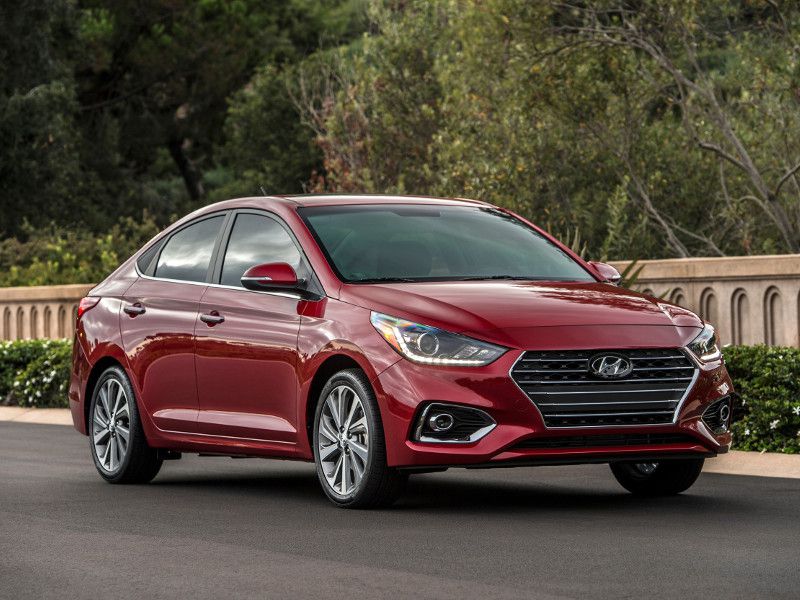
2019 Hyundai Accent ・ Photo by Hyundai
When you compare the 2018 Kia Rio vs. the 2018 Hyundai Accent, which is best? Well, before we get to the answer, let’s be clear about something: The Rio and the Accent are built on the same platform and share a lot of hardware. This is because the Kia and Hyundai brands both are owned by the Hyundai Motor Company. It’s like the way the Chevrolet Silverado and GMC Sierra are similar under the skin, since both of their brands are owned by GM.
As for the Rio and the Accent, there’s at least one major difference. The Rio is available as either a sedan or a five-door hatchback, while the Accent is offered only as a sedan. Nor is that the only way to tell them apart.; the Rio and Accent have some noticeable differences that we'll detail.
Performance
For starters, the 2018 Kia Rio and 2018 Hyundai Accent rely on the same 1.6-liter direct-injection four-cylinder engine that makes 130 hp and 117 lb-ft of torque. (It's interesting to note that a top-selling rival in the segment, the 2018 Nissan Versa, makes do with only 109 hp and 107 lb-ft of torque). The Kia and Hyundai products also have matching six-speed manual and automatic transmissions.
Yet despite those similarities, the Accent does have a clear advantage in one important area: With a curb weight of 2,502 pounds, the Hyundai sedan is almost 150 pounds lighter than its Kia rival. Put another way, the Rio sedan is nearly six percent heavier. The Rio hatchback is heavier still.
The Accent wins on performance however you look at it thanks to a better power-to-weight ratio.
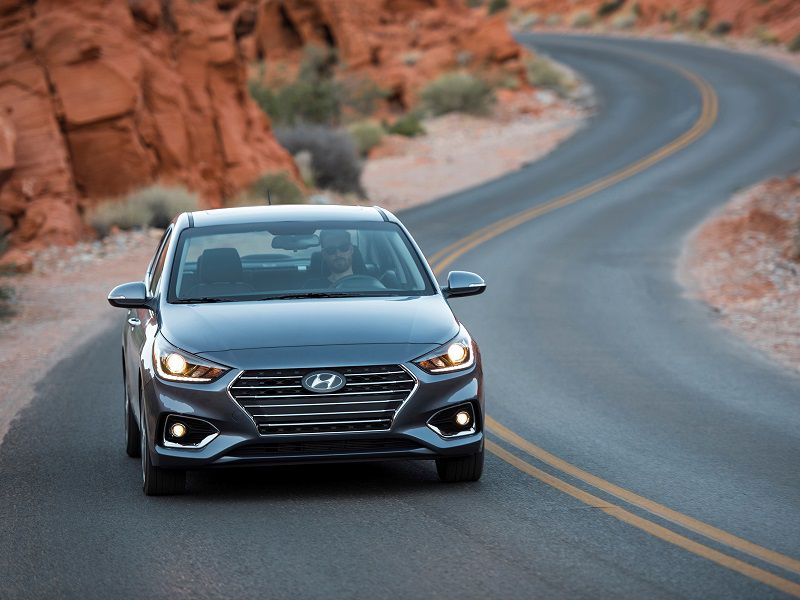
Photo by Hyundai
Fuel Economy
Like most mainstream small cars, the 2018 Kia Rio and 2018 Hyundai Accent are pretty fuel efficient. They can achieve combined EPA ratings north of 30 mpg in all body styles and with all transmissions. The specific numbers, though, are slightly different between the two brands.
The Accent earns fuel-economy grades of 28 mpg city/38 mpg highway/32 mpg combined with its automatic transmission. The comparable Rio provides the same ratings in the city and for combined travel, but slips to 37 mpg on the highway. With a manual transmission, the Rio posts an EPA line of 29/37/32. This includes an extra mpg in two categories, for city and combined driving, versus the Accent.
Since two is more than one, the Rio ekes out the win here.
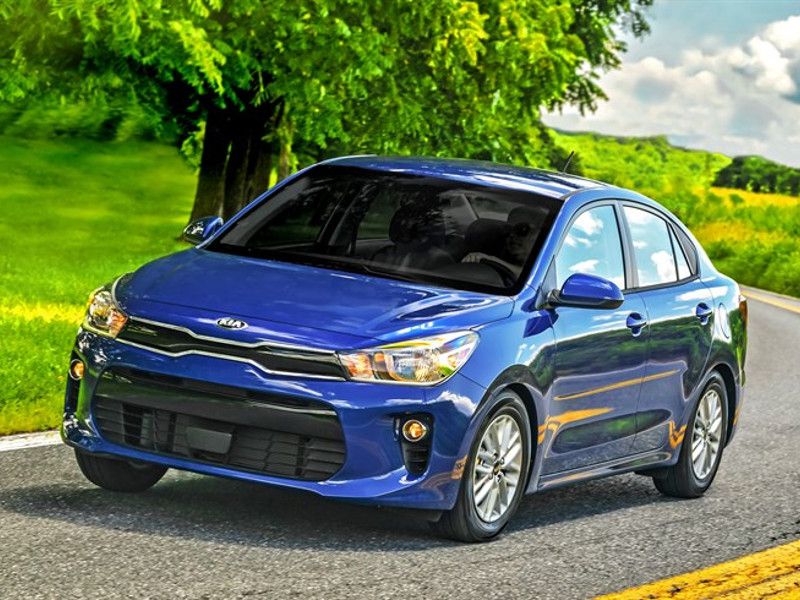
Photo by Kia
Cabin and Trunk Space
Due in part to that shared platform, the 2018 Hyundai Accent and 2018 Kia Rio both have the same amount of front and rear legroom. In all cases, the cars offer a competitive 42.1 inches up front and 33.5 inches in the back. They have the same 38.9 inches of front headroom, too.
However, you will find some differences elsewhere, as a result of each car’s actual interior design. As a result, the Accent supplies a few extra cubic inches of passenger volume over the Rio sedan, and the Rio hatchback has a few more cubic inches than either four-door model. It also wins on cargo space, with 32.7 cubic feet of rear storage (when its back seats are folded).
This means Team Rio takes this matchup, as well.
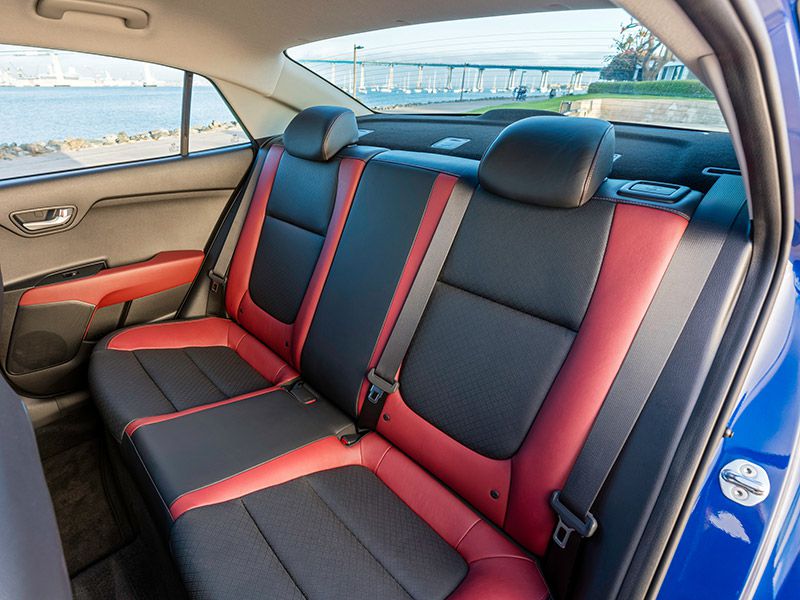
Photo by Kia
Safety Ratings
We’ve got another close call in the safety department. Each car has all the basics, such as stability control and anti-lock brakes, and both brands can provide automatic forward emergency braking, a rearview camera, and a hill-control function (with that, you won’t roll backward when starting the car on an incline). The 2018 Kia Rio and 2018 Hyundai Accent also are similar for what they’re missing: Neither was tested for the NHTSA 5-Star Safety Ratings program.
That said, the Rio once again has a small but distinct advantage. When equipped with available LED headlights, the Rio earns a full Top Safety Pick+ honor from the IIHS. The Accent’s optional LED headlights don’t perform as well in the IIHS testing. The result is a “regular” Top Safety Pick rating for the Hyundai.
The advantage goes once again to the Kia Rio.
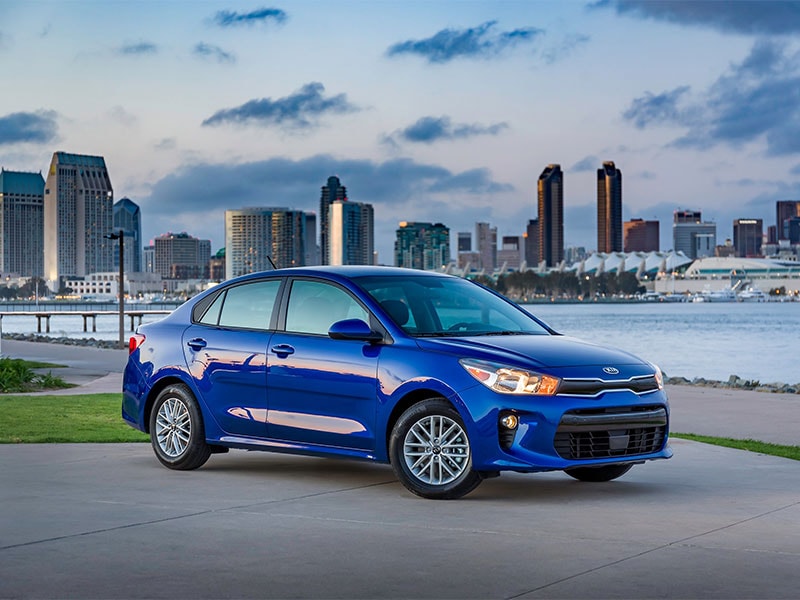
Photo by Kia
Infotainment and Technology
If we focus only on actual content, this category is a dead heat. The 2018 Hyundai Accent and 2018 Kia Rio come standard with a 5-inch touchscreen, four speakers, an AM/FM stereo, a CD player, and USB/auxiliary inputs for digital audio.
Also, both the Accent and the Rio can be ordered with the same infotainment upgrades. Highlights include the latest Android Auto and Apple CarPlay smartphone-integration technologies, a 7-inch touchscreen, satellite radio, telematics systems, and two extra tweeter speakers installed up front. Of course, the Accent, Rio and Rio 5 all offer Bluetooth, but it’s standard for the Accent. In fact, the Accent offers many of its infotainment technologies in lower trims than the Rio.
That’s why, if forced to make a call, we’ll count this one as a win for the Accent.
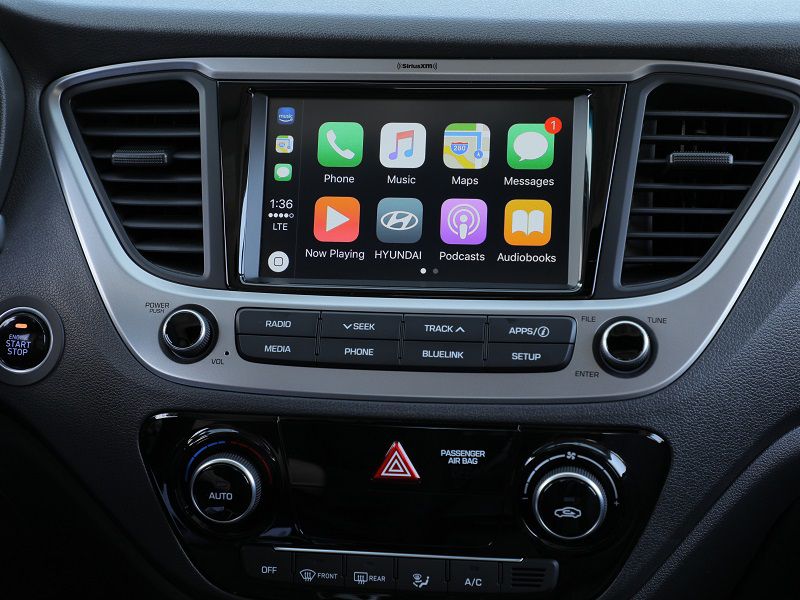
Photo by Hyundai
Exterior Design
Aesthetically speaking, we prefer the style of the 2018 Kia Rio. Kia’s distinctive low-profile grille and swept-back headlights give a fresh face to the sedan and hatchback alike. The 2018 Hyundai Accent shows off complicated front sculpting that some folks will find a bit too complicated. And, both Kia body styles have an athletic stance that’s lacking with the Accent.
For exterior content, we already mentioned that both the Rio and Accent are available with LED headlights. Well, they’re also available with LED accent lights, front fog lights, heated outside mirrors, and 15-inch aluminum-alloy wheels.
So, why is the Accent our winner in terms of exterior design? It’s the only one with a power moonroof, 17-inch aluminum-alloy wheels, and the convenience of an automatically opening hands-free trunk.
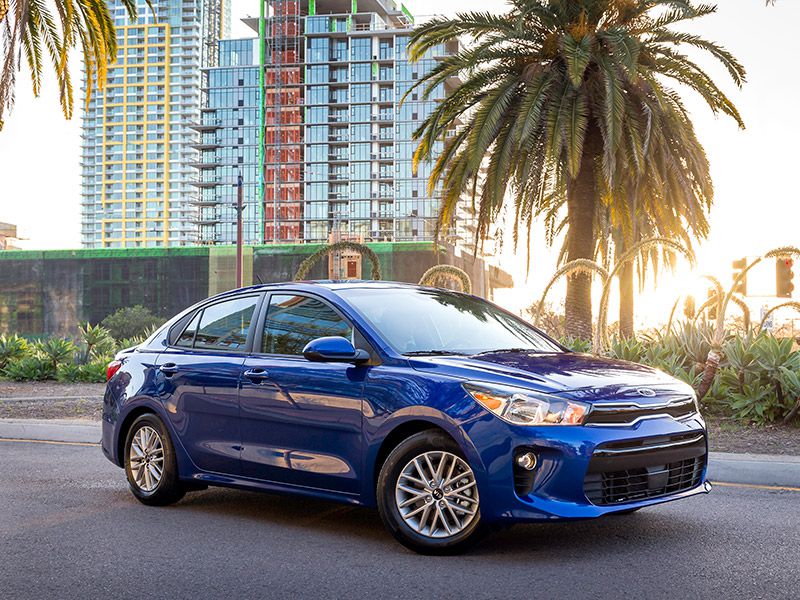
Photo by Kia
Interior Design
The 2018 Kia Rio and 2018 Hyundai Accent supply much of the same interior content. This includes air conditioning, power windows, power locks, cruise control, a center console with a storage area and sliding armrest, and a leather-wrapped multifunction steering wheel with a tilt-and-telescoping column. Now, not all of that is standard for both cars, but we discuss the value proposition below.
Next, both vehicles feature expressive cabin designs with many attractive details. The Accent, for example, takes a driver-focused approach with a center stack that’s turned slightly toward the pilot. The Rio’s dashboard has a more symmetric, sculptural appearance with a freestanding infotainment screen. Kia also spices things up with an available leather package with red accents.
That creates a stylish two-tone look for the car, and tips the balance in favor of the Rio.
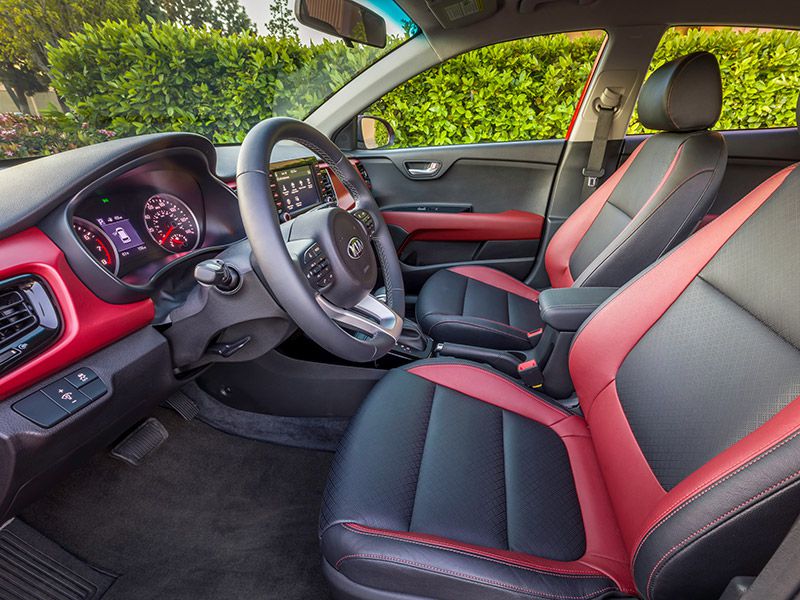
Photo by Kia
Pricing and Value
With a starting price of $13,900, the 2018 Kia Rio sedan is $1,095 less expensive than the 2018 Hyundai Accent. But as we’ve mentioned earlier, the cars also have different content levels, and that explains most of the pricing differences.
Consider: The higher-priced entry-level Accent comes with a rearview camera, Bluetooth for handsfree calling, cruise control, and power mirrors, all of which costs extra for the Rio. You even have to pay for power windows in the Kia vehicle. Meanwhile, turning to the higher trims, you can enjoy the 7-inch touchscreen, Android Auto, Apple CarPlay, and voice recognition in the Accent SEL for just $17,295. To see the same system in the Rio, you’ll have to ante up at least $18,400 for the EX model.
It’s advantage Accent here.
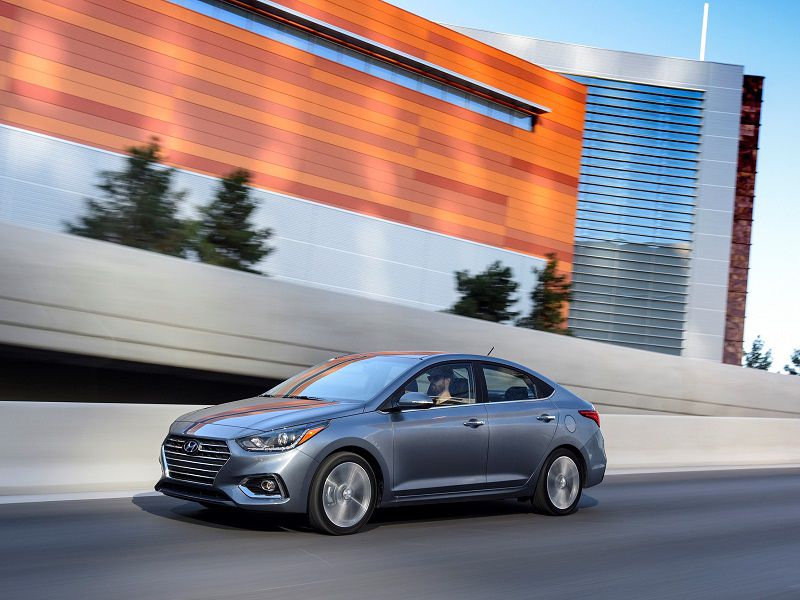
Photo by Hyundai
Which is best for shoppers?
We told you at the start that the 2018 Kia Rio and 2018 Hyundai Accent were corporate cousins under the skin, and that’s reflected in our final results. The cars are so evenly matched that they each won four categories in today’s contest. The Accent was our top performer and stood out for infotainment technology, exterior design, and value. The Rio’s victories were for fuel economy, safety, interior design, and cabin space.
The tie-breaker? That’s the Rio’s extra body style, which brings customers an extra choice when they’re shopping for a high-quality subcompact car.
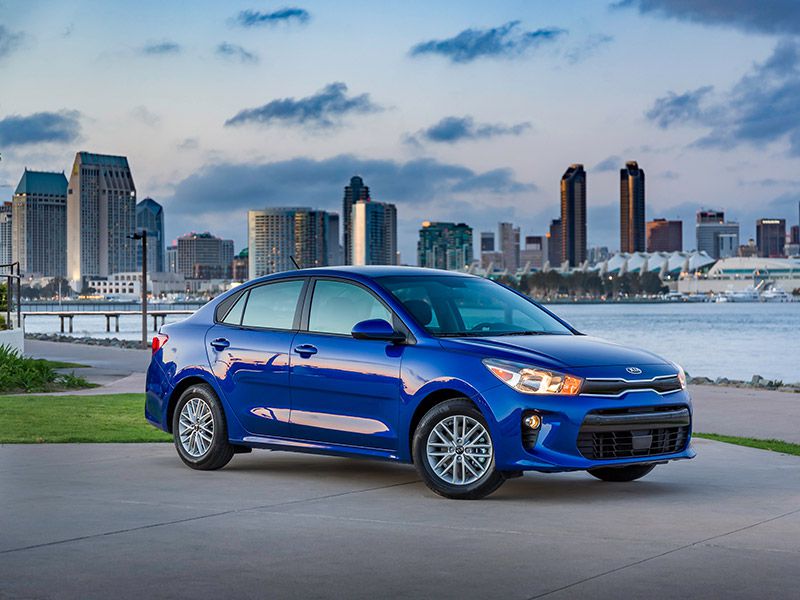
Photo by Kia